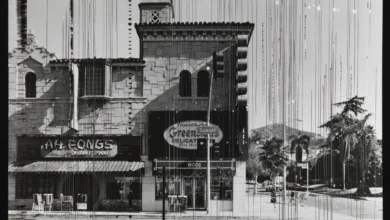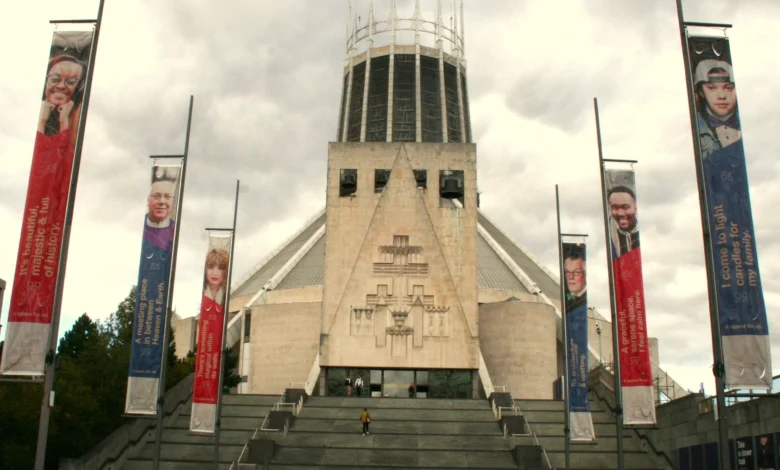
Exploring Liverpool’s Metropolitan Cathedral: A Symbol of Faith and Innovation
During my formative years in the early 80s, whenever an episode of the now defunct TV soap Brookside came on television and its opening credits briefly showed Liverpool’s iconic Liverpool Metropolitan Cathedral, officially named Metropolitan Cathedral of Christ the King – but also affectionately known as “The Mersey Funnel” and “Paddy’s Wigwam” – I would always be mesmerised by its appearance, mainly due to the actual shape of it, which is unusual, to say the least.
It is fair to say cathedrals tend to look a certain way: large buildings and architectural designs that pay attention to detail. The Liverpool Metropolitan Cathedral is not lacking in size; therefore, it potentially has the capacity to hold large numbers of worshippers at any given time.
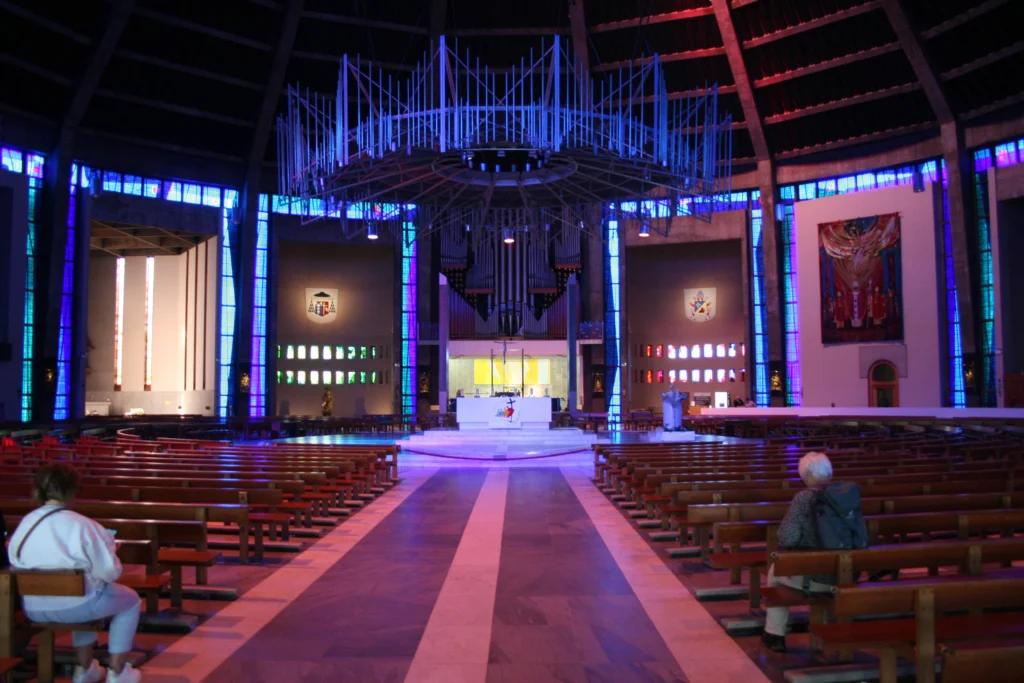
However, the minimalist approach architect Frederick Gibberd applied to his design of the famous Liverpool landmark, which opened in 1967, indicates he was a non-conformist, rejecting traditionalism and focusing more on originality.
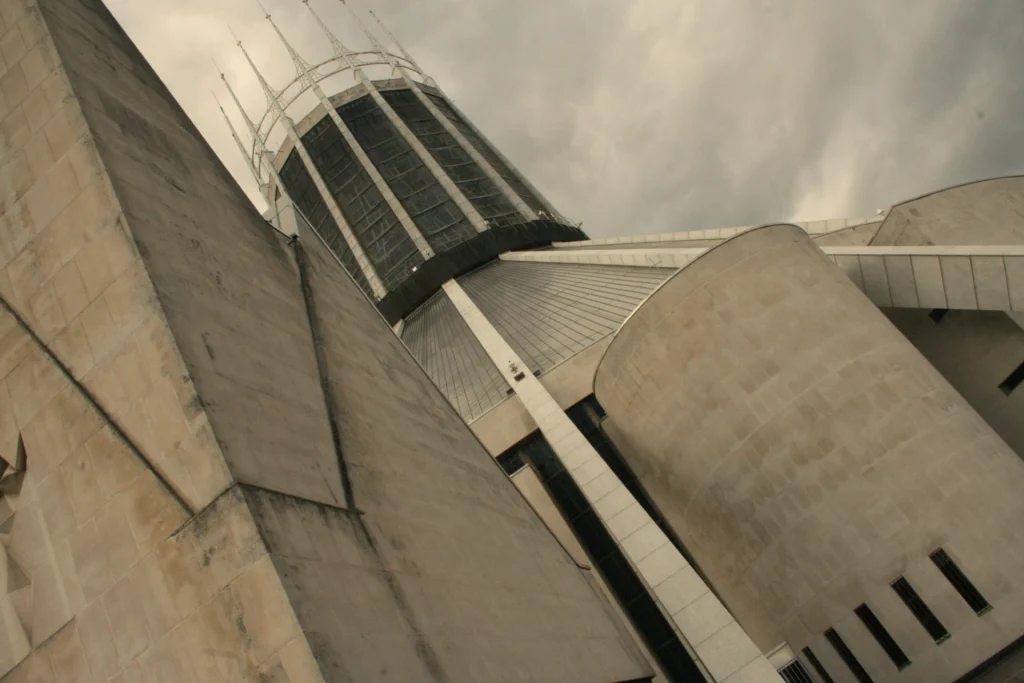
What becomes fascinating when staring at the Liverpool Metropolitan Cathedral is its Brutalist architectural style. The normality of Gothic and Romanesque features is nowhere to be seen, replaced with a heavy reliance on different shapes made from thick concrete.
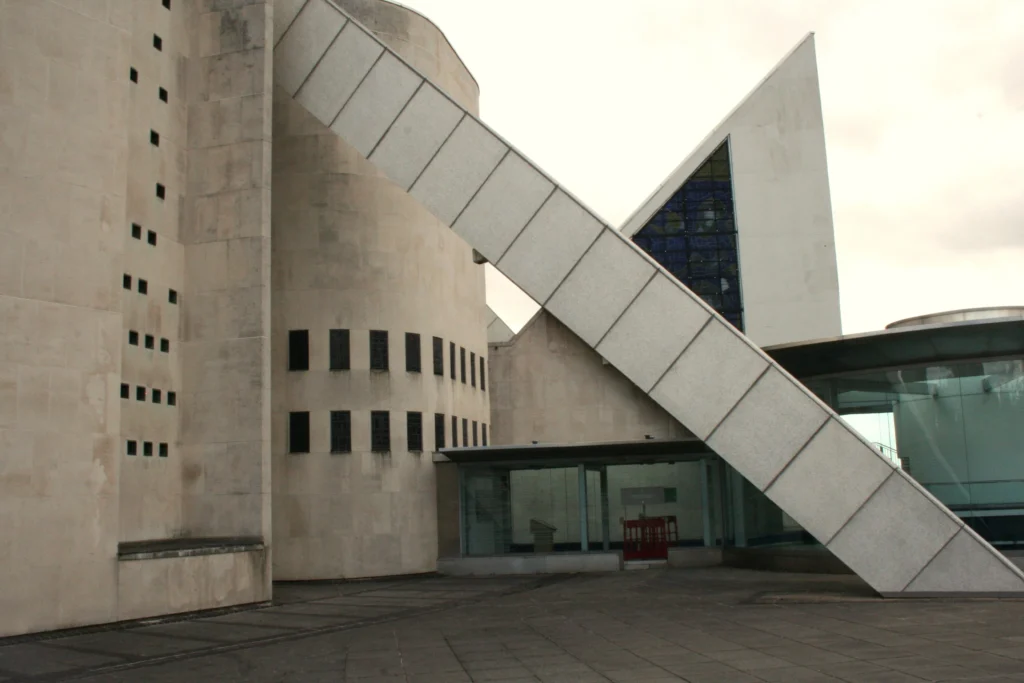
While outside, walking around the front and back of the cathedral enables you to observe its aesthetics in greater depth. Each piece of concrete fits together like a completed jigsaw puzzle, making an impressive display of creativity.
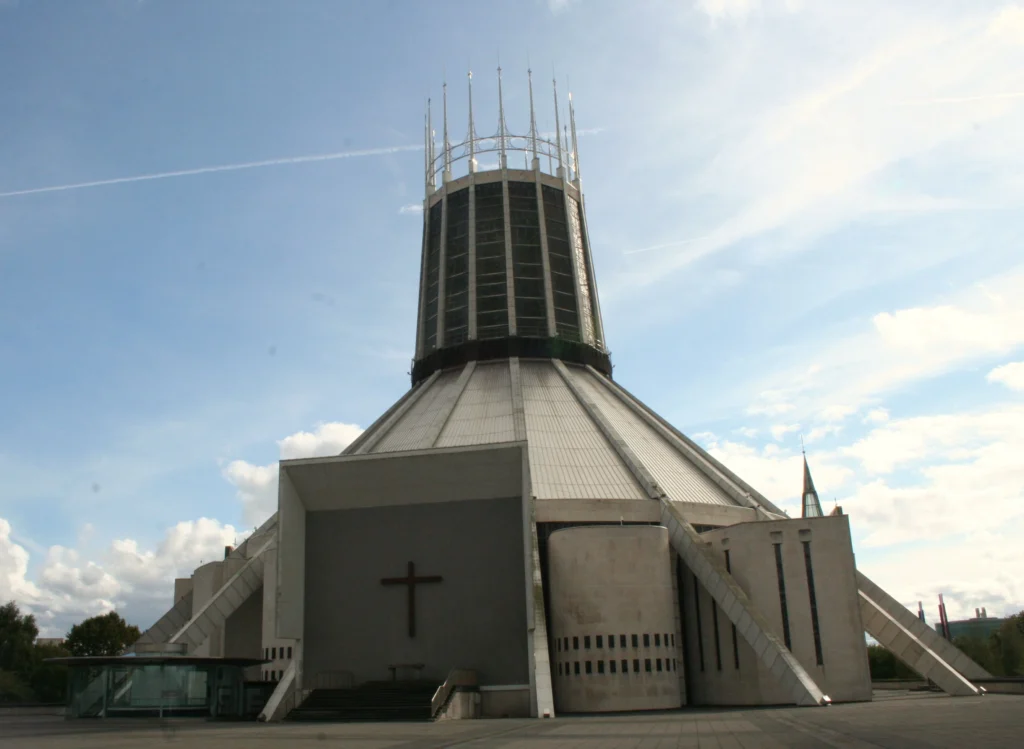
Another key feature synonymous with cathedrals in general is their clearly visible, large, colourful stained glass windows, and the Liverpool Metropolitan Cathedral does embrace this convention, but on its own terms. Yes, it does have stained glass windows, albeit most of them are small and subtle.
The lack of large stained glass windows creates additional space for smooth surfaces inside. And many of those smooth surfaces are covered with pieces of art; a strategy with long-term positive effects that allows more room for creative expression to exist within the cathedral.
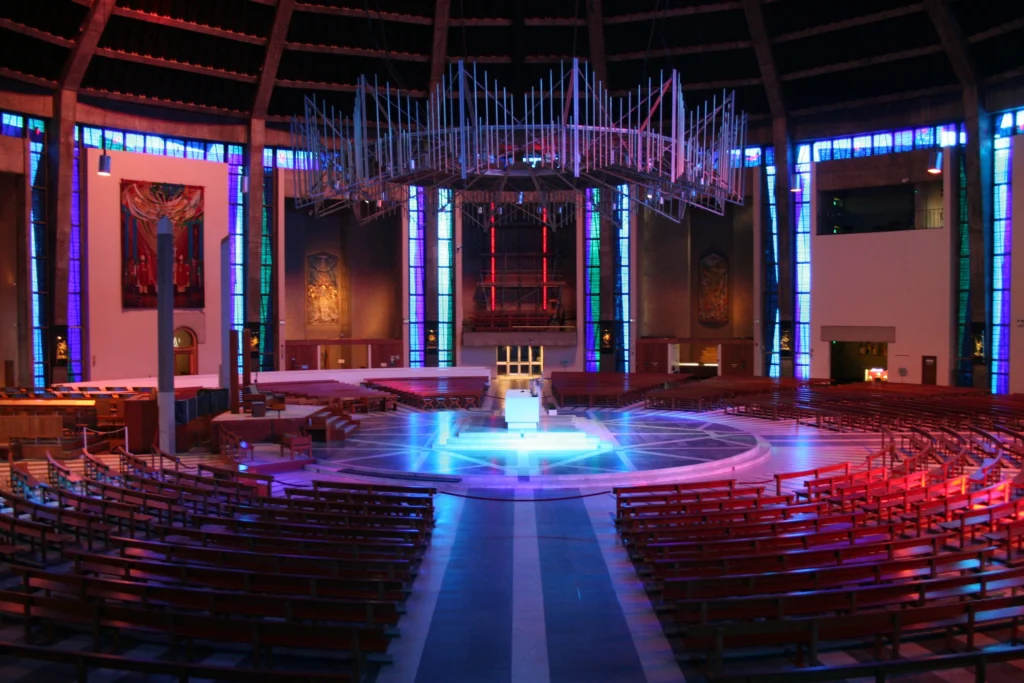
For example, a collection from the artist and sculptor Arthur Dooley, born in Liverpool, is currently on display.
Interestingly, when standing near the main altar and looking upwards towards the roof, a superb small collection of stained glass created by John Piper and Patrick Reyntiens, called the “Crown of Glass”, appears, and their works complement Gibberd’s artistry, a great collaboration. In addition, looking upwards and noticing the rays of assorted colours mixing through the glass on a hot summer’s day is quite extraordinary.
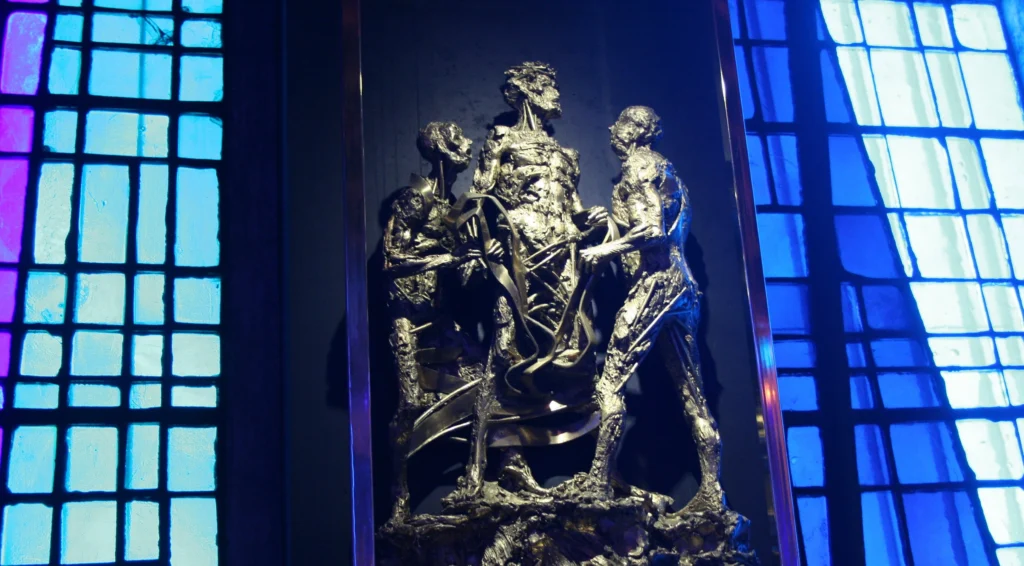
Furthermore, the dim lights inside the cathedral ignite a calming atmosphere, which subsequently sets the right tone of decorum needed in a place of worship.
Although the cathedral first opened their doors to the public in 1967, it still retains a modern appearance due to its distinctive look and presence in Liverpool.
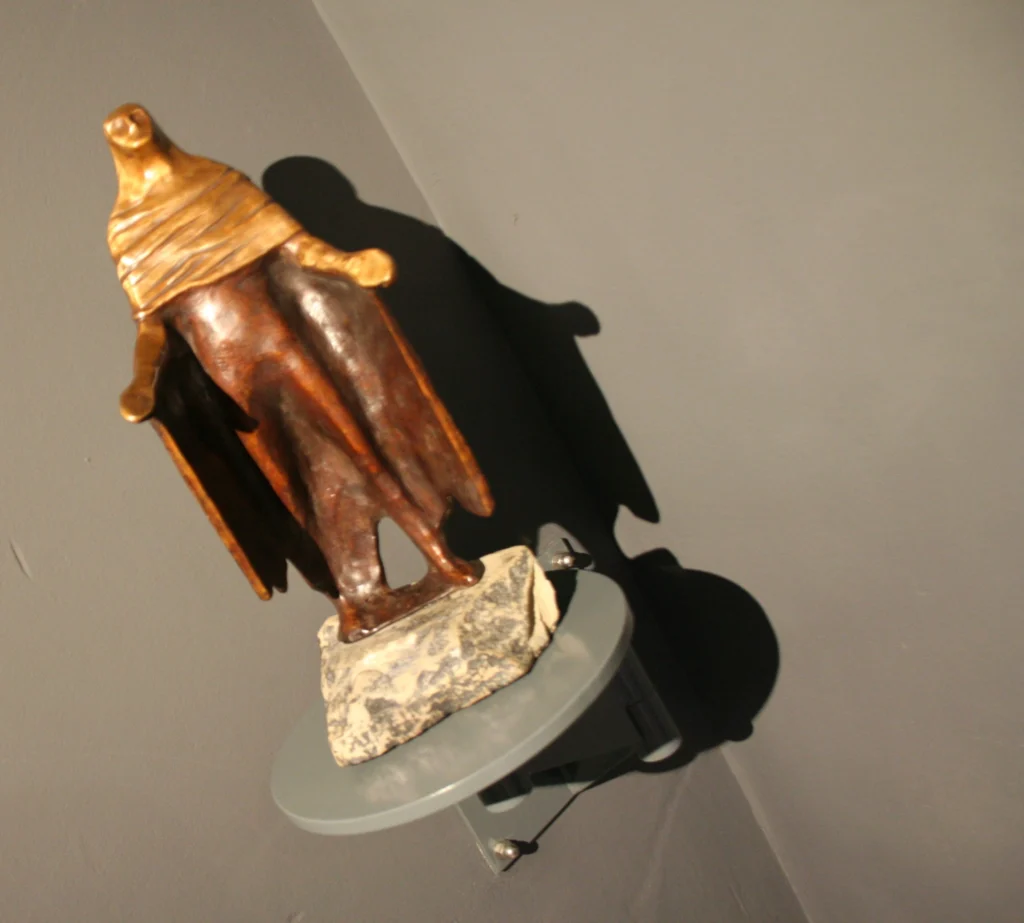
Yes, there are other Brutalist and iconic buildings in the local area. Still, in my opinion, visually, there are no other buildings in Liverpool that possess the uniqueness of the Liverpool Metropolitan Cathedral.
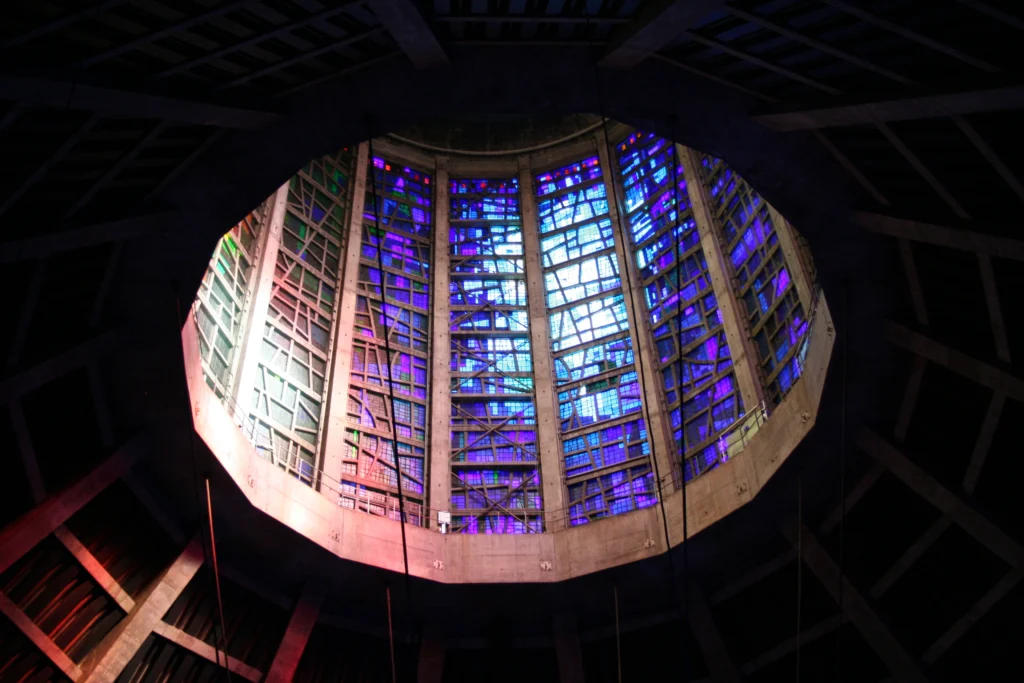
On the other hand, to my surprise, it has only recently been upgraded to a Grade 1 listed building status. Surely, its exceptional design alone should have guaranteed a place at the top of the architectural and historical interest ladder years ago.
Nevertheless, moving up the pecking order will ultimately ensure it is preserved and protected to the highest level.





